Choosing the right kitchen materials and finishes could turn out to be the single most stress-inducing chore— and what makes it even more challenging is that there are no hard and fast rules to work with! Our kitchen material checklist gives you thumb rules and handy tips you can use to select the right kitchen materials.
Here are some guidelines you can follow, to make your choices easy and practical.
Your cabinets set the tone for the aesthetics of your kitchen, and create most of the functionality. When choosing the materials, here are some considerations to keep in mind:
| Cost | A classical-style kitchen with veneer finishes would cost more than a simple matte laminate modern kitchen. The more accessories you choose, the more your cost will increase. |
| Aesthetics | Pick the style and material of the shutters based on the décor theme you have followed. A vintage kitchen would look out of place in a home that has a modern outlook. |
| Texture and finish | Your cabinets could be surface-finished with matte, semi-matte, gloss or high gloss finishes. You can also opt for textured laminates that can give you ribbed, grainy, or metallic surfaces. |
| Colour | Lighter colours will make your room appear brighter and more spacious, while dark colours will appear to constrict the space. You can also opt for a two-tone finish which is trending at the moment! |
| Durability | The core material will determine the longevity of your cabinets. Workmanship also plays an important role in durability. Cabinets that are perfectly finished with seamless edge sealing will last a long time. Be careful to choose hardware that can take the load on the drawers; if you plan to store heavy items, then you should ask for heavy-duty channels. |
| Maintenance | Wood and veneer finishes will require regular polishing but can be refinished to look as good as new any number of times. Laminates can be wiped clean very easily, but scratches will show up and cannot be fixed. |
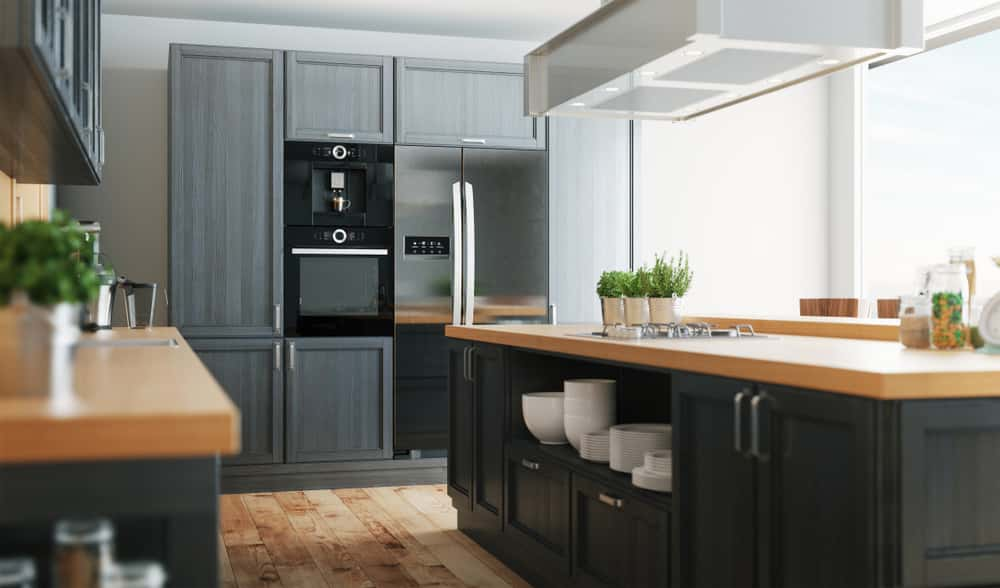
Your countertop takes a lot of wear and tear, and the materials you choose should be hardworking to match! Keep in mind:
| Cost | Costs vary, with laminated boards at the lower end and high-quality marble or quartz at the upper end of the spectrum. |
| Aesthetics | Corian or quartz suit modern kitchens, while stone finishes will go well with any style. |
| Texture and finish | Countertops should always be smooth and polished, for ease of maintenance. |
| Colour | Here, too, lighter colours will open up the room and make it look spacious. However, depending on the material you choose, light colours could also get stained. Darker colours will not show up any stains. |
| Durability | If you are using softer stones like marble, make sure that the surface is well sealed to make it completely waterproof and durable. Granite, quartz and Corian are very durable. Laminated surfaces are not very durable and can get scratched easily. |
| Maintenance | Wipe down the counter at the end of every cooking session, using organic cleaners and warm water. Don’t leave it to dry on its own, but wipe with a clean dry cloth to bring out the shine on the surface. Natural stones should be re-sealed every few years to maintain the quality of the surface. |
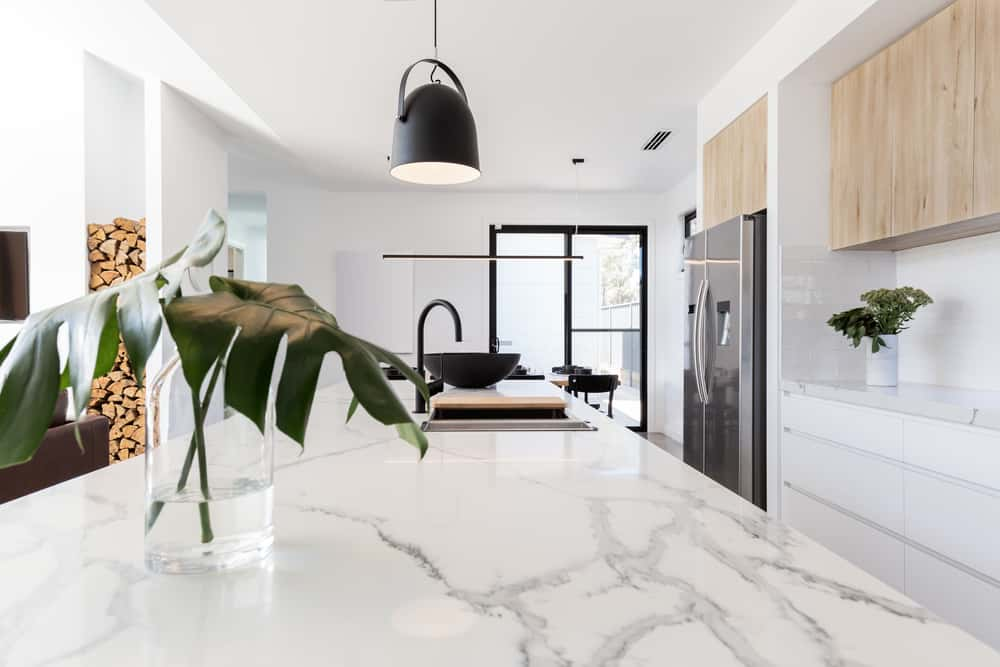

Next up, think of choosing the flooring materials and the backsplash. Here’s what you should consider:
| Cost | Ceramic tiles are the most cost-effective option, while high-end natural stone could prove to be expensive. |
| Aesthetics | Tiles and stones are available in a wide range of patterns, textures, and colors. Pick the best option that complements your home décor and sense of style. The backsplash and flooring should look good together. |
| Texture and finish | Floor tiles should ideally not be highly polished, as any spills could make them slippery. Wall tiles can be glossy or matte, as anything that has too much texture will attract oil and grime, and become difficult to clean. |
| Colour | Tiles and stones are available in a wide range of colors and patterns. Pick the options that match your overall décor theme and palette. |
| Durability | Softer stones like marble or Kota should be well sealed with a penetrating sealer, to make the surface completely waterproof and durable. Vitrified tiles are hard and non-porous and will last a great many years. |
| Maintenance | Wipe the backsplash with soapy water and then rinse till the soap suds are gone, wiping again with a microfiber cloth to bring out the shine. |
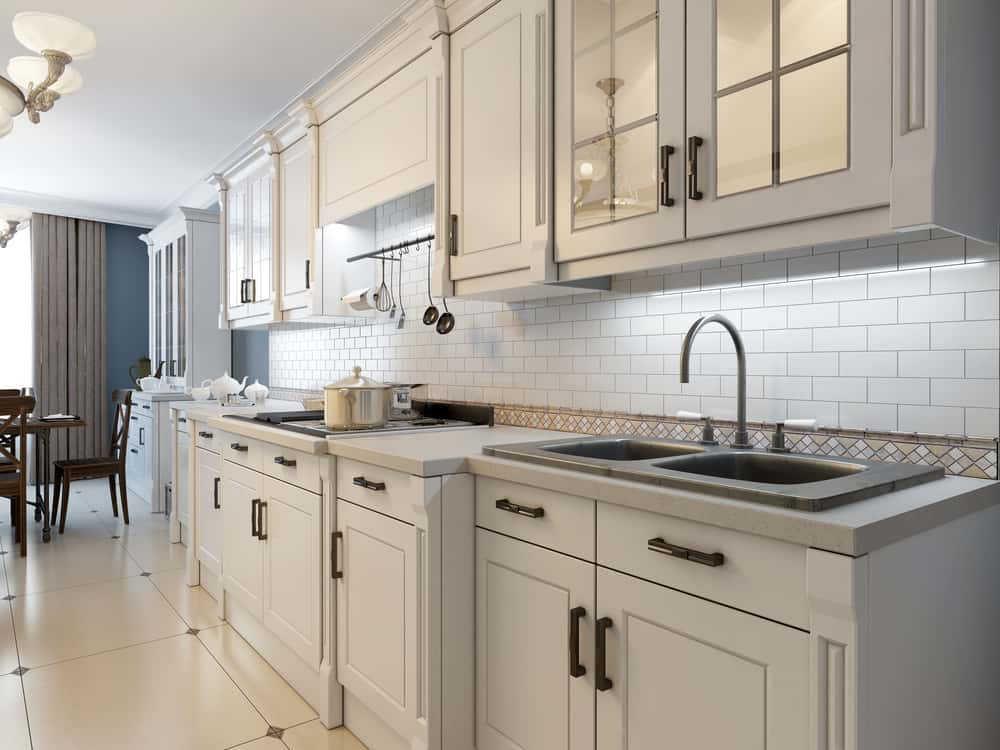
A false ceiling adds character to the kitchen and helps to provide uniform lighting across the room. Do think about these points:
| Cost | POP ceilings are the cheapest, while wooden ceilings are expensive. |
| Aesthetics | If you have an old-fashioned vintage kitchen, a POP ceiling with moldings and panels will add to its charm. Sleek gypsum board false ceilings with hidden lights or a ceiling with wooden beams add character and enhance the aesthetics of your kitchen. |
| Colour | Light colours lift up and visually enhance the height of the kitchen. The most popular colour is white. |
| Maintenance | POP and gypsum ceilings will require painting and crack sealing every year. Wooden ceilings must be repolished every couple of years. |
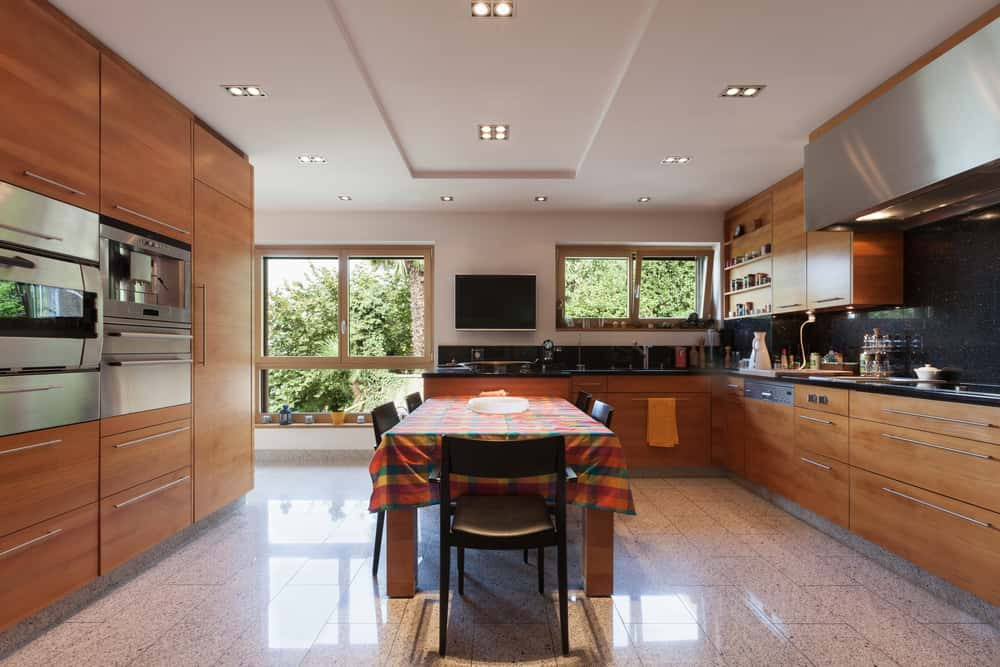
The sink forms a part of your countertop as well and should be picked for its durability and ease of maintenance. Read our blog to find out the ideal traits of a good kitchen sink.
| Cost | Stainless steel sinks are the most cost-effective option. Quartz composite, Corian, and stone sinks fall into a more expensive category. |
| Aesthetics | An integrated sink that is the same material or complements the countertop looks good. Stainless steel sinks are most commonly in use. |
| Texture and finish | Pick a smooth texture, with a finish that is easy to clean and does not become a hiding place for germs or grime. |
| Colour | The colors you pick should suit your décor theme. |
| Durability | Stainless steel sinks of a lower gauge can get dented or scratched. |
| Maintenance | Sinks with rounded edges are easier to clean. A sink that is integrated with the countertop has seamless edges and does not harbor any germs. |
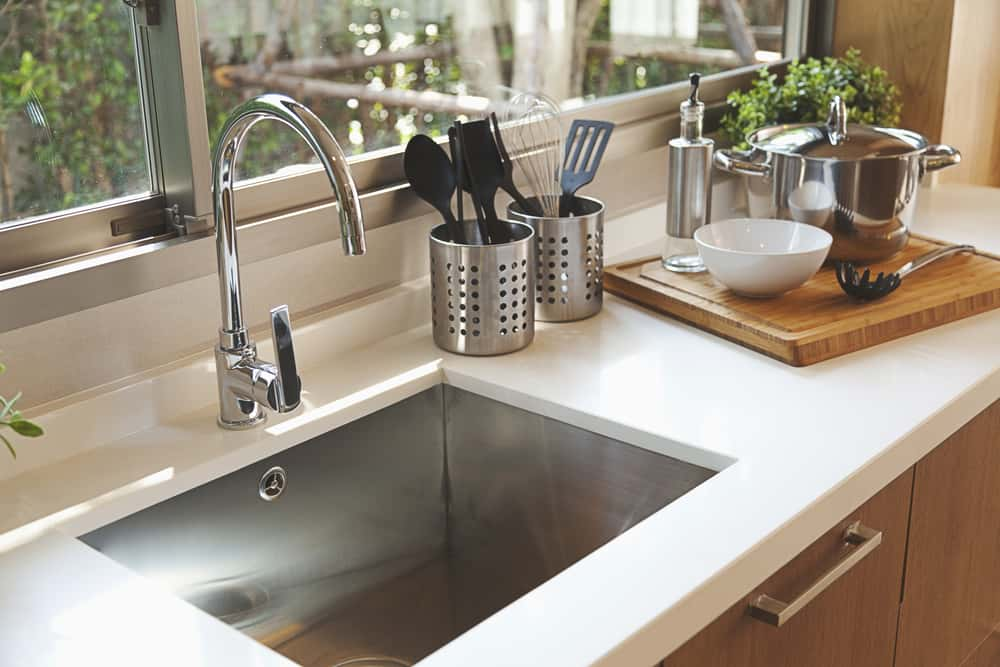
We hope you’ve got all the info you need to make your material choices easier! Whether you want to keep it simple or pull off a complex look, our expert designers at HomeLane can help! We’re just a call away.

 EXPLORE MORE
EXPLORE MORE EXPLORE MORE
EXPLORE MOREBy submitting this form, you agree to the privacy policy and terms of use